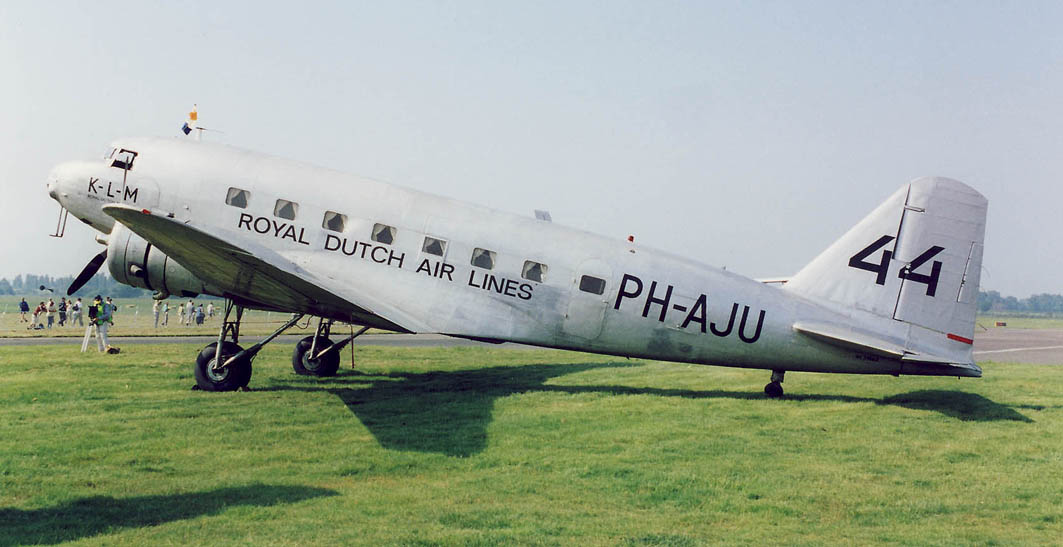
Douglas DC2
 |
| DC2 N39165 at an airshow at Coventry airport, UK, in June 2003 wearing the colours of PH-AJU. |
| The
Douglas DC2 was born as a direct result of US airline Trancontinental
and Western Air's frustration with Boeing, which refused to deliver the
Boeing 247s it had ordered until it had completed an order for the
rival United group, which included Boeing Air Transport. Raher than wait, the airline issued its own specification and what emerged was an outline for a three-engined, all-metal monoplane with accommodation for 12 passengers. One of the five companies to respond was Douglas, but it proposed a twin-engined aircraft to surpass the 247. The Douglas Commercial No 1 first flew on July 1, 1933 and was powered by two 690hp Wright SGR-1820-F nine-cylinder air-cooled radial engines. After some modifications and with more powerful engines, the DC1 operated a few services for TWA before latert being sold in Europe. TWA ordered 20 aircraft, redesignated DC2s with 710hp Cyclone SGR-1820-F3s. The DC2 had a longer fuselage and space for 14 passengers. This type first flew on May 11, 1934 and entered service on May 18. About 200 DC2s followed, including production in Japan by Nakajima. The DC2 soon became a mainstay on US airline routes, with American and Eastern joining TWA. Pan Am bought the type mainly for use by its Panagra and CNAC subsidiaries. In Europe, KLM and Swissair also bought the aircraft and it was a Dutch aircraft, PH-AJU, that took part in the 1934 MacRobertson England to Australia air race. Other operators included CLS in Czechoslovakia, ALI in Italy, LAPE in Spain, and Holyman's in Australia. Lufthansa also tested one before World War Two and Polish airline LOT used two powered by Bristol Pegasus engines. The type was supplied to the US Navy and Marine Corps as the R2D and to the Air Force under several designations, including the C33 cargo version with larger tail surfaces. The type continued in limired service beyond World War II but was soon eclipsed by the Douglas Sleeper Transport, which became the DC3 and C47. A few DC2s survive in museums while one aircraft flies on in the Netherlands in the colours of the MacRobertson air race competitor. |
| Contents | Photos and census | Update |